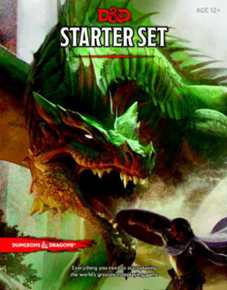 It is with some surprise that I find that I’ve been running the Dungeons & Dragons organised play at Guf Ballarat for the past six years. It began slowly, but now we typically have somewhere between 20 and 40 people playing with us on a weekly basis, coming to one or other of the D&D nights we hold or, for some players, both.
It is with some surprise that I find that I’ve been running the Dungeons & Dragons organised play at Guf Ballarat for the past six years. It began slowly, but now we typically have somewhere between 20 and 40 people playing with us on a weekly basis, coming to one or other of the D&D nights we hold or, for some players, both.
We get new players trying the game pretty regularly as well. Some stay around and become permanent additions to our roster, while others try it for a while before finding it isn’t for them, or – more often – that they prefer playing with home groups. However, we’ve helped introduce them to the game and show them what a fun experience it can be, so I’m happy with that.
However, I’m finding there are a few features of this edition of D&D that I hadn’t expected.
One of them is that it is really, really good for introducing new players to the game.
This derives from a couple of factors, one of which is the excellent design of the first few levels. Players aren’t overwhelmed by a first-level character’s abilities. Instead, there’s just a few numbers to pay attention to and a limited range of “named” actions. There aren’t a lot of special cases to consider. Even the Wizard, the most complicated of the early classes, has a simple “default” mode where they use cantrips like firebolt again and again, and only need to bring out more potent first-level spells rarely – and at that time can be guided by the other players as to what to use.
A couple of my friends dislike how the rogue can’t hide as a bonus action until second level. For myself, I think dealing with that adds a layer of complication. Let the rogue get used to working with their companions – gaining sneak attack against creatures adjacent to their allies – before getting into the hide-and-attack play, which can be a little Dungeon Master-dependent.
However, I’d also rate the fact that now, two years after the fifth edition of Dungeons & Dragons was released, there is only one player supplement available in stores (and that a minor one), to be just as significant. Quite simply, new players aren’t scared off by a wall of books. There’s the Starter Set, the Player’s Handbook… and that’s all most players need. And they’re on the same playing field as the players who have been there from the start.
This has the interesting effect of making everyone a lot more familiar with the standard rules. Make no mistake: this edition of D&D offers a lot of options in the Player’s Handbook. Although players who like to go very deeply into just one class may be feeling the need for more expansion now, players who want to explore the breath of options the game offers likely haven’t even got close to exhausting the opportunities.
Making new players feel welcome is a huge part of helping grow the game, and is something I consider tremendously important. The ease of integration of new players, the simple ways of explaining how to play the game to them, and not scaring them off with a huge pile of books? It makes me happier about the future of the game than I have been at many times in the past.
This is Dungeon & Dragons. It’s the greatest game I know. Let’s enjoy playing it together!

Great write up. 🙂